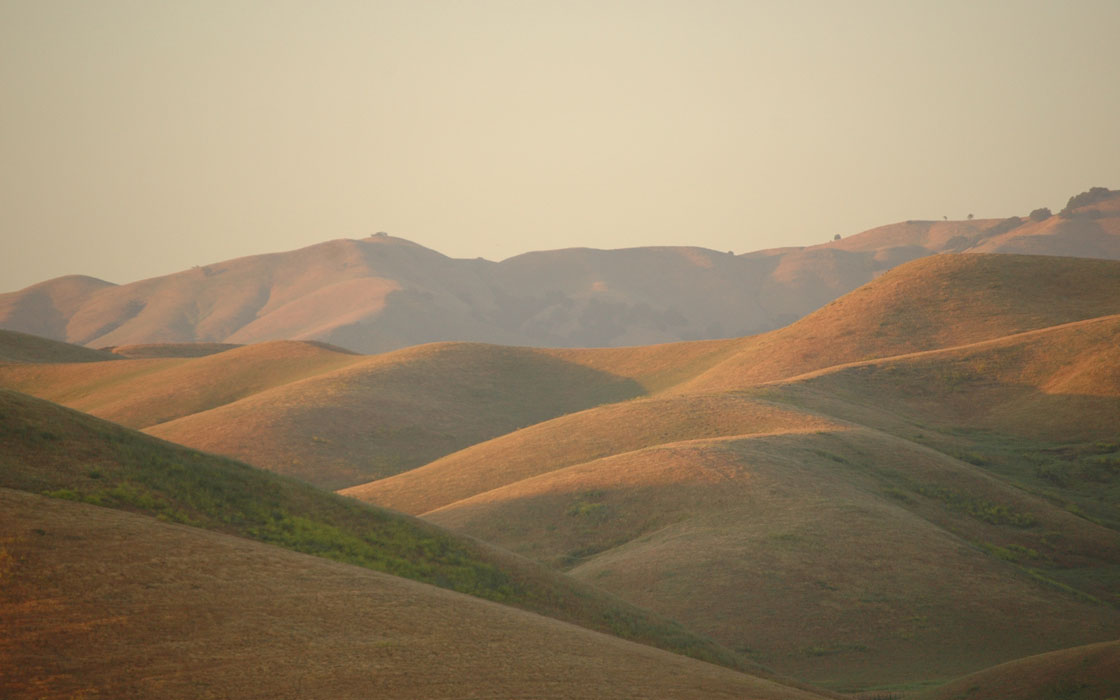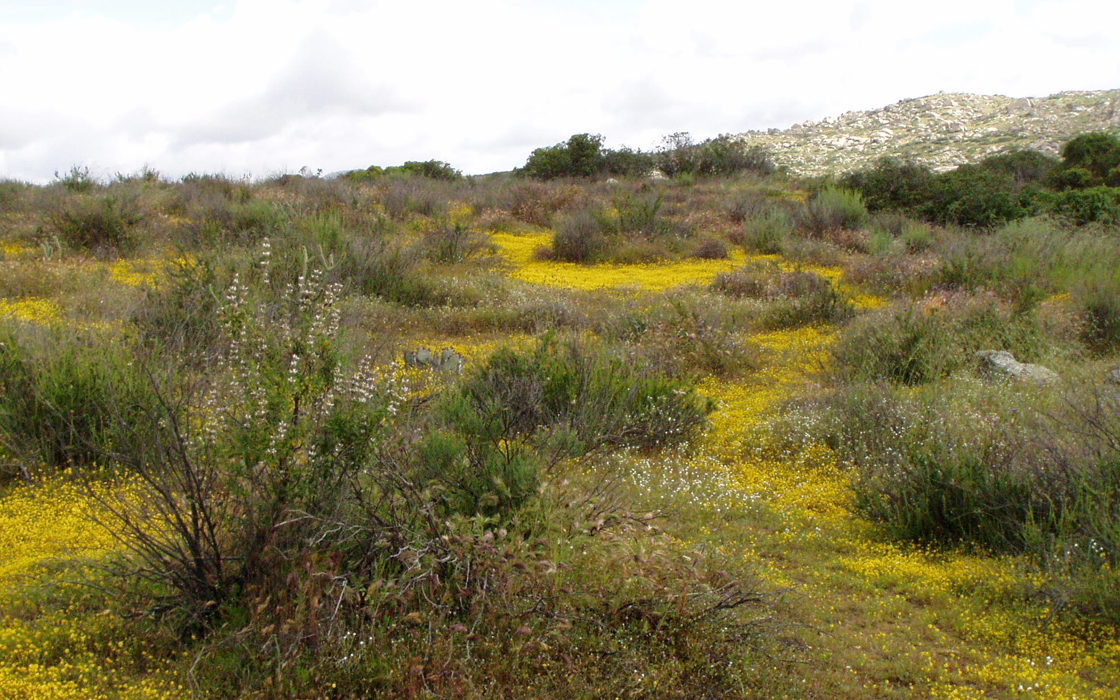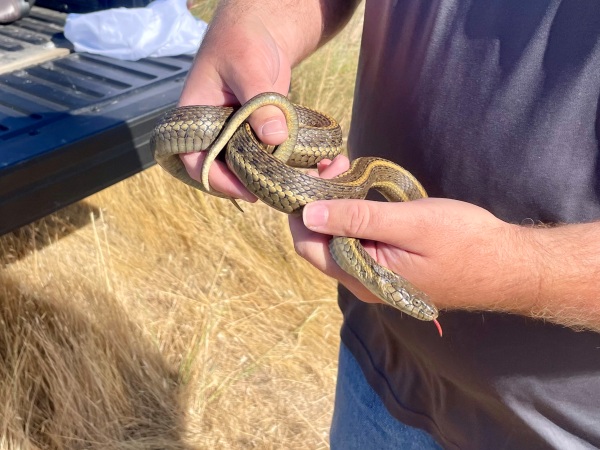Threatened Giant Gartersnakes on CNLM Preserve show Resilience
On August 5, 2024 a single spark was all it would take to set off a grass fire that swept through the Prichard Lake Preserve in Sacramento County, California. The source of the fire, likely a discarded cigarette thrown out a car window a mile away from the Preserve on Elverta Road, would cause the first fire in the Preserve’s history.
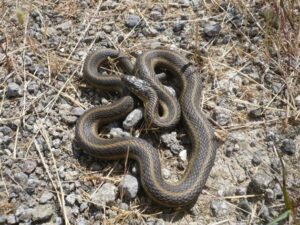 The Prichard Lake Preserve—comprised by freshwater marsh wetlands, slough-like channels, seasonal wetlands, and uplands—was constructed by the Sacramento County Airport System (SCAS) in 2008 to serve as mitigation for the protection of the State and Federally threatened giant gartersnake (Thamnophis gigas). SCAS sought protection and professional management of the 43-acre Preserve by granting a conservation easement and perpetual management responsibilities to the Center for Natural Lands Management (CNLM). CNLM’s primary goals for the Preserve are to protect the restored marsh and maintain wetland habitat on which the gartersnake depends for food (fish and frogs) and shelter from predators, as well as the upland habitat they use for basking. The former rice field at the Preserve known as the “Upper Site” serves as important emergent wetland habitat and is surrounded by grasslands (uplands). The fire was hot enough to burn much of the emergent vegetation in the wetland down to the water line and, at the end of the day, nearly 95% of the Upper Site shallow wetlands had burned.
The Prichard Lake Preserve—comprised by freshwater marsh wetlands, slough-like channels, seasonal wetlands, and uplands—was constructed by the Sacramento County Airport System (SCAS) in 2008 to serve as mitigation for the protection of the State and Federally threatened giant gartersnake (Thamnophis gigas). SCAS sought protection and professional management of the 43-acre Preserve by granting a conservation easement and perpetual management responsibilities to the Center for Natural Lands Management (CNLM). CNLM’s primary goals for the Preserve are to protect the restored marsh and maintain wetland habitat on which the gartersnake depends for food (fish and frogs) and shelter from predators, as well as the upland habitat they use for basking. The former rice field at the Preserve known as the “Upper Site” serves as important emergent wetland habitat and is surrounded by grasslands (uplands). The fire was hot enough to burn much of the emergent vegetation in the wetland down to the water line and, at the end of the day, nearly 95% of the Upper Site shallow wetlands had burned.
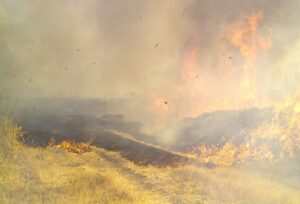 Although CNLM staff were not allowed within the perimeter of the active fire operations, SCAS staff were diligent and supportive, keeping CNLM staff apprised of the fire extent and containment activities throughout the event. After the fire, CNLM staff moved quickly to repair damaged water control structures to ensure continued water supply to the wetland, and emergent vegetation quickly resprouted within days, but questions remained. How did snakes cope with the fire? Would the population persist at the Preserve?
Although CNLM staff were not allowed within the perimeter of the active fire operations, SCAS staff were diligent and supportive, keeping CNLM staff apprised of the fire extent and containment activities throughout the event. After the fire, CNLM staff moved quickly to repair damaged water control structures to ensure continued water supply to the wetland, and emergent vegetation quickly resprouted within days, but questions remained. How did snakes cope with the fire? Would the population persist at the Preserve?
CNLM staff decided to implement an early survey for the species in 2025 to see if the snakes continued to occupy the Preserve after the fire. CNLM reached out to expert giant gartersnake biologist Eric Hansen for this purpose. Eric is contracted regularly to monitor the species at the Preserve. Trapping began on May 16 and continued for 30 days. The highest number of giant gartersnakes captured at Prichard Lake previously in a 30-day period had been 9 individuals in 2016. In 2025, that record was broken with 12 individuals captured.
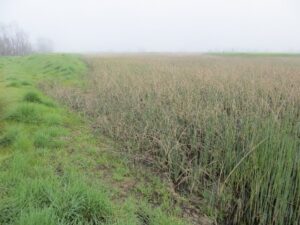 Despite what appeared to be a devastating wildfire, the species showed resiliency and was able to adapt to the short-term loss of emergent vegetative cover in the Preserve’s deeper waters as a refugium during and after the fire where emergent vegetation was more protected from the flames. As a result of this diversity of habitat gradients supported though CNLM’s active management, it appears the species was able to persist at the Preserve.
Despite what appeared to be a devastating wildfire, the species showed resiliency and was able to adapt to the short-term loss of emergent vegetative cover in the Preserve’s deeper waters as a refugium during and after the fire where emergent vegetation was more protected from the flames. As a result of this diversity of habitat gradients supported though CNLM’s active management, it appears the species was able to persist at the Preserve.
Nevertheless, while the population of giant gartersnakes at Prichard Lake and other CNLM Preserves, including another SCAS property (Willey Wetlands), are protected and carefully managed, the species faces many threats range-wide including loss of habitat, invasive species, diseases, and fragmentation of habitat — thus increasing their vulnerability to extirpation. To bring public awareness to the plight of the giant gartersnake, the local Sacramento non-profit organization Save the Snakes has partnered with State Senator Roger Niello and the California Rice Commission to draft Senate Bill 765 to make the giant gartersnake an office State Symbol of California. Joining other State Symbols such as the State Flower (California poppy [Eschscholzia California]) and State Bird (California Quail [Callipepla californica]), it is hoped that bestowing the status of State Snake to the giant gartersnake will assist with conservation efforts for this threatened California endemic species.


